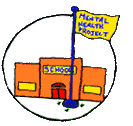Response to Intervention is finding its way into schools with a significant push from the federal government. Properly conceived and implemented, the strategy is expected to improve the learning opportunities for many students and reduce the number who are
inappropriately diagnosed with learning disabilities and behavioral disorders.
The approach overlaps ideas about pre-referral interventions but is intended to be more
systematically implemented with special attention to enhancing teacher capability to carry out "well-designed and well-implemented early intervention." The aim also is to improve assessment for determining whether more intensive and perhaps specialized assistance and diagnosis are required. (It is important to emphasize that the tactic involves specific and well-monitored plans for "identified" students and is not to be used as a delaying tactic related to getting students the interventions they need.)
Response to Intervention has the potential to build teacher capacity so that similar problems are prevented in the future. Implied in all this is that someone is working to ensure (1) classroom teachers have or are learning how to implement "well-designed early intervention" in the classroom, and (2) support staff are learning how to play a role, sometimes directly in the classroom, to expand the intervention strategies if needed.
Response to Intervention calls for making changes in the classroom designed to improve the student's learning and behavior as soon as problems are noted and using the student's response to such modifications as info for making further changes if needed. The process continues until it is evident that it cannot be resolved through classroom changes alone.
Through this sequential approach, students who have not responded sufficiently to the regular
classroom interventions would next receive supportive assistance designed to help them remain in the regular program, and only when all this is found not to be sufficiently effective would there be a referral for special education assessment. (If the problem proves to be severe and disruptive, an alternative setting may be necessary on a temporary basis to provide more intensive and specialized assessments and assistance.)
A core difficulty here is that of mobilizing unmotivated students (and particularly those who have become actively disengaged from classroom instruction). If motivational considerations are not effectively addressed, there is no way to validly assess whether or not a student has a true disability or disorder.
If Response to Intervention is treated simply as a matter of providing more and better instruction, it is unlikely to be effective for a great many students. However, if the strategies are understood broadly and as part and parcel of a comprehensive system of classroom and school-wide learning supports, schools will be in a position not only to address problems effectively early after their onset, but will prevent many from occurring. Such a broad-based system is needed to reduce learning, behavior, and emotional problems, promote social/emotional development, and effectively reengage students in classroom learning. This will not only reduce the numbers who are inappropriately referred for special education or specialized services, it also will enhance attendance, reduce misbehavior, close the achievement gap, and enhance graduation rates.
Response to Intervention is currently being operationalized across the country. While there will be variability in practice, the tendency is to proceed as if all that is needed is more and better instruction. Clearly, this is necessary. And, the emphasis needs to go beyond direct instruction. The key is truly personalized instruction (see below). And, because the context for this is a school, instruction must be supported by school-wide interventions focusing on enhancing supports for transitions and crisis events and home and community involvement.
But, there will be students for whom all this is insufficient. In such cases, some other forms of supportive assistance must be added to the mix – inside and, as necessary, outside the classroom.
Referral for special education assessment only comes after all this is found inadequate.
To spell out the classroom-based approach a bit:
Step 1 involves personalizing instruction. The intent is to ensure a student perceives instructional processes, content, and outcomes as a good match with his or her interests and capabilities.
The first emphasis is on motivation. Thus:
Step 1a stresses use of motivation-oriented strategies to (re)engage the student in classroom instruction. This step draws on the broad science-base related to human motivation, with special attention paid to research on intrinsic motivation and psychological reactance. The aim is to enhance student perceptions of significant options and involvement in decision making.
The next concern is developmental capabilities. Thus:
Step 1b stresses use of teaching strategies that account for current knowledge and skills. In this respect, the emphasis on tutoring (designated as "Supplemental Services" in Title I) can be useful if the student perceives the tutoring as a good fit for learning.
Then, if necessary, the focus expands to encompass special assistance. Thus:
Step 2 stresses use of special assistance strategies to address any major barriers to learning and teaching, with an emphasis on the principle of using the least intervention needed (i.e., doing what is needed, but no more than that). In this respect, the range of strategies referred to as "Prereferral Interventions" and the programs and services that constitute student/learning supports are of considerable importance. (Again, the impact depends on the student's perception of how well an intervention fits his or her needs.)
Note: Prereferral interventions identify regular classroom problems, identify the source of the problems (student, teacher, curriculum, environment, etc.), and take steps to resolve the problems within the regular classroom. See the Center's Practice Notes on
Prereferral Intervention –
https://smhp.psych.ucla.edu/pdfdocs/practicenotes/prereferral.pdf
Continue on to our
Ongoing Hot Issue

Back to Hot Topics Home Page
School Mental Health Project-UCLA
Center for Mental Health in Schools
WebMaster: Perry Nelson (smhp@ucla.edu)
|
 |


